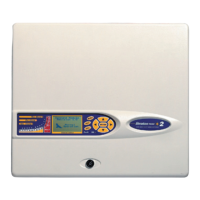Page 25
Stratos HSSD-2 • INSTALLER’S HANDBOOK • Iss. 12
4. Sampling
Pipe Design
4.1 Pipework
Sampling pipes should be made from a non-hazardous material and should be clearly
identified.
a.
The ideal internal diameter of sampling pipes is 22mm. Other sizes will often work
but will provide different response times.
b.
Ideally, if the total length of sampling pipe is greater than 50 metres, then multiple
pipes should be used. When using multiple sampling pipes, care should be taken to
achieve a reasonable degree of balance (say within 10% of airflow) to ensure even
suction from the pipes.
Aspirating system design is inherently simple. It is often possible to achieve good
system performance with very simple installations. There are however a few rules which
must be adhered to, and these rules are equally applicable to all aspirating systems
which operate on similar principles to Stratos-HSSD. The information contained in
this Handbook is intended as an overview only. For further information please see the
complete System Design Guide.
1.
Do not expect one detector to achieve good performance if sampling from areas of
different air pressure (typically: underfloor air plenums and room spaces or different
rooms in air-conditioned areas). This is because the air pressure differences may
cause reverse or poor airflow along the sampling pipes. If it is not possible to locate
the detector within the protected area it may be necessary to lead an exhaust pipe
from the detector exhaust port returning air to the protected area.
2.
Always locate the sampling points in a position to which smoke may reasonably
be expected to travel. This may sound obvious, but, for example, do not expect
ceiling mounted sampling points to operate satisfactorily if air flow prevents the
cool smoke from an incipient fire from reaching ceiling level. In this instance it is
usually better to locate the sampling pipes directly in the airflow (for example in an
air conditioning unit air intake). There is no substitute for carrying out smoke tests
prior to installation of pipes to indicate suitable sampling point location.
3.
To assist in design and to verify system performance, it is advisable to use the
PipeCAD
®
sampling pipe modelling software.
False ceiling
Exhaust pipe
Stratos Detector
Sampling hole
Sampling pipe

